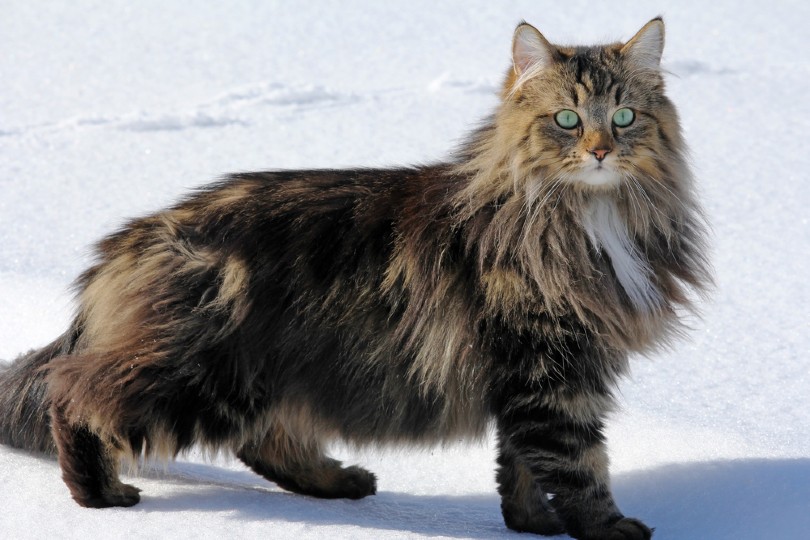Talk about thorny problems – or rather pointed (norwegian forest cats for sale claws and teeth) problems. Did you know this is the second highest ranking problem that drives cat owners to the vet for solutions? The first one is inappropriate elimination in the house. If your cat came with manuals, this might be a lot easier to deal with. However, cats don’t come with manuals, and the other thing is, even if they did, they wouldn’t read them anyway.
So what do you do? That’s the $64 million dollar question. It’s well documented that aggression is usually “acquired” in one of two ways – early experiences in life and genetics, with genetics playing the lead role. You might be able to live with your cat’s quirks (I mean really, they live with ours!) but cat bites and scratches hurt like the dickens and can cause infections.
Yes, cats are considered pets, but by nature they are hunters and stalkers with the teeth and claws to back that point up. No matter how pampered your Maine Coon Cat is, they will still lie in wait, stalk and pounce. That’s just the way it is! You’ve seen them rip about your house batting and pouncing on anything that moves, including the dog’s wagging tail (which sets the dog off too). In the world of a small kitten, and at times older cats, anything that looks like it might be “prey” is worth hunting. It’s a great blast playing hunt! However, if you decide to encourage this kind of behavior, beware! It can and will get out of hand.
Kittens usually have litter-mates to test their boundaries. If one of them gets out of line, they get an attitude adjustment from the kitten they just peed off, or Mom steps in and reads them the riot act. If a kitten is adopted out too early, this rough play transfers to the owner. Owners don’t always let the cat know what’s out of line and what isn’t. Likely under the mistaken impression that it’s “just” harmless play and you can’t discipline a cat like a dog.
There’s a difference between harmless kitten/cat carousing and aggressive play. Just look at your kitten/cat and you will know the signs right away – highly exaggerated postures, the “crouch”, ears flattened, dilated pupils and that wicked switching tail. What to do? Re-direct the kitten’s/cat’s behavior if you like by clapping your hands loudly or making some other ruckus that startles them.
Frankly the easiest solution is to not encourage this acting out by rough housing with them. Refuse to participate and yes, they will grow out of this.
Territory aggression is a bit of a bummer. The racket a cat lets out when another feline comes onto “their” property is horrendous. You can’t miss it. It might sound funny, but in terms of staking a claim to a place, a cat is way worse than a dog. This kind of behavior usually starts when they are between 1 and 2 years old. They not only get upset, they get downright bent out of shape at any other cat daring to intrude. It will sometimes take them more than half the day to get their noses out of joint.
Territory aggression is the “hey this spot is mine” kind of clash that happens right in front of you in the house. The hissing, growling and spitting starts, there’s usually some fast foot action, a yowl or two and the chase is on. If you interfere you may get bitten, clawed or hissed at. If you do succeed in separating the cats, the instigator may displace his bad mood on the other cats in the house (and sometimes the owner).
There are times when the feline grumbling can escalate into a full rear attack made by the more dominant member of the pack. The submissive cat gets tail and loin injuries. When in that spot they usually retaliate and spray the house to get their rank in the pack back. You won’t always see this coming either because the signals they give each other are really subtle. Although multiple cat households are mostly peaceful because they’ve all worked out their differences over a period of time, clashes do happen when something causes stress. Turf battles can be loud and ugly. Adding a new cat to the mix without following the “Introduction” protocol will invite a disaster.

More Stories
What Types of Injuries Do Queens No-Fault Doctors Treat Most Often?
Difference Between Workers’ Comp Doctors and Regular Physicians in Rego Park
Physiotherapists: The Architects of Movement and Recovery